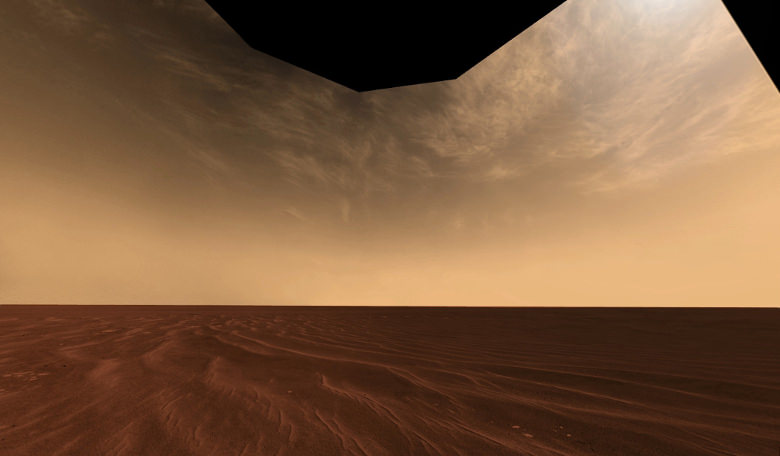Many features on the surface of Mars hint at the presence of liquid water in the past. These range from the Valles Marineris, a 4,000 km long and 7 km deep system of canyons, to the tiny hematite spherules called “blueberries“. These features suggest that liquid water played a vital role in shaping Mars.
Some studies show that these features have volcanic origins, but a new study from two researchers at the Carl Sagan Institute and the NASA Virtual Planet Laboratory put the focus back on liquid water. The model that the two came up with says that, if other conditions were met, cirrus clouds could have provided the necessary insulation for liquid water to flow. The two researchers, Ramses M. Ramirez and James F. Kasting, constructed a climate model to test their idea.
Cirrus clouds are thin, wispy clouds that appear regularly on Earth. They’ve also been seen on Jupiter, Saturn, Uranus, possibly Neptune, and on Mars. Cirrus clouds themselves don’t produce rain. Whatever precipitation they produce, in the form of ice crystals, evaporates before reaching the surface. The researchers behind this study focussed on cirrus clouds’ because they tend to warm the air underneath them by 10 degrees Celsius.

If enough of Mars was covered by cirrus clouds, then the surface would be warm enough for liquid water to flow. On Earth, cirrus clouds cover up to 25% of the Earth and have a measurable heating effect. They allow sunlight in, but absorb outgoing infrared radiation. Kasting and Ramirez sought to show how the same thing might happen on Mars, and how much cirrus cloud cover would be necessary.
The cirrus clouds themselves wouldn’t have created all the warmth. Impacts from comets and asteroids would have created the heat, and extensive cirrus cloud cover would have trapped that heat in the Martian atmosphere.
The two researchers conducted a model, called a single-column radiative-convective climate model. They then tested different ice crystal sizes, the portion of the sky covered by cirrus clouds, and the thicknesses of those clouds, to simulate different conditions on Mars.

They found that under the right circumstances, the clouds in the early Martian atmosphere could last 4 to 5 times longer than on Earth. This favors the idea that cirrus clouds could have kept Mars warm enough for liquid water. However, they also found that 75% to 100% of the planet would have to be covered by cirrus. That amount of cloud cover seems unlikely according to the researchers, and they suggest that 50% would be more realistic. This figure is similar to Earth’s cloud cover, including all cloud types, not just cirrus.
As they adjusted the parameters of their model, they found that thicker clouds and smaller particle sizes reduced the heating effect of the cirrus cloud cover. This left a very thin set of parameters in which cirrus clouds could have kept Mars warm enough for liquid water. But their modelling also showed that there is one way that cirrus clouds could have done the job.
If the ancient Martian surface temperature was lower than 273 Kelvin, the value used in the model, then it would be possible for cirrus clouds to do their thing. And it would only have to be lower by 8 degrees Kelvin for that to happen. At times in Earth’s past, the surface temperature has been lower by 7 degrees Kelvin. The question is, might Mars have had a similarly lower temperature?
So, where does that leave us? We don’t have a definitive answer yet. It’s possible that cirrus clouds on Mars could have helped to keep the planet warm enough for liquid water. The modelling done by Ramirez and Kasting shows us what parameters were required for that to happen.

